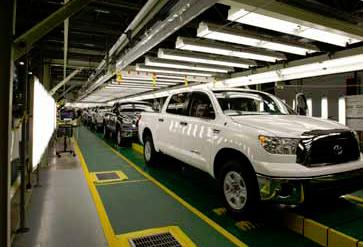
Despite historic levels of unemployment, American manufacturing companies are struggling to fill as many as 600,000 skilled positions, according to a new survey from Deloitte and The Manufacturing Institute.
The survey Boiling Point? The skills gap in US manufacturing, polled a nationally representative sample of 1,123 executives at manufacturing companies recently and revealed that 5 percent of current manufacturing jobs are unfilled due to a lack of qualified candidates.
"The survey shows that 67 percent of manufacturers have a moderate to severe shortage of available, qualified workers," said Craig Giffi, vice chairman and consumer & industrial products industry leader, Deloitte LLP. "Moreover, 56 percent anticipate the shortage to increase in the next three to five years."
"These unfilled jobs are mainly in the skilled production category – positions such as machinists, operators, craft workers, distributors and technicians," said Emily DeRocco, president, The Manufacturing Institute. "Unfortunately, these jobs require the most training and are traditionally among the hardest manufacturing jobs to find existing talent to fill."
According to DeRocco, companies need to partner with educational institutions to make developing workforce skills a top strategic priority. "Our education system must also do a better job aligning education and training to the needs of employers and job-seekers. To support this effort, The Manufacturing Institute is deploying the Manufacturing Skills Certification System endorsed by the National Association of Manufacturers (NAM) – a system designed to build educational pathways to in-demand manufacturing jobs."
The survey findings may seem remarkable since the country is facing an unemployment rate above 9 percent, but DeRocco says it can all be linked back to a trend that started before the 2008 economic slowdown. "Over the past five years, most manufacturers have redesigned and streamlined their production lines while implementing more process automation. In short, just as the industry is changing, the skills of the workers are changing as well."
"Manufacturers obviously want to fill these roles by tapping the currently available workforce," says DeRocco. "However, they report that the No. 1 skills deficiency among their current employees is in the area of problem solving, making it difficult for current employees to adapt to changing needs. Adding to the problem, respondents report that the education system is not producing workers with the basic skills they need." The manufacturing industry's aging workforce can only exacerbate the situation, she adds.
* * *













